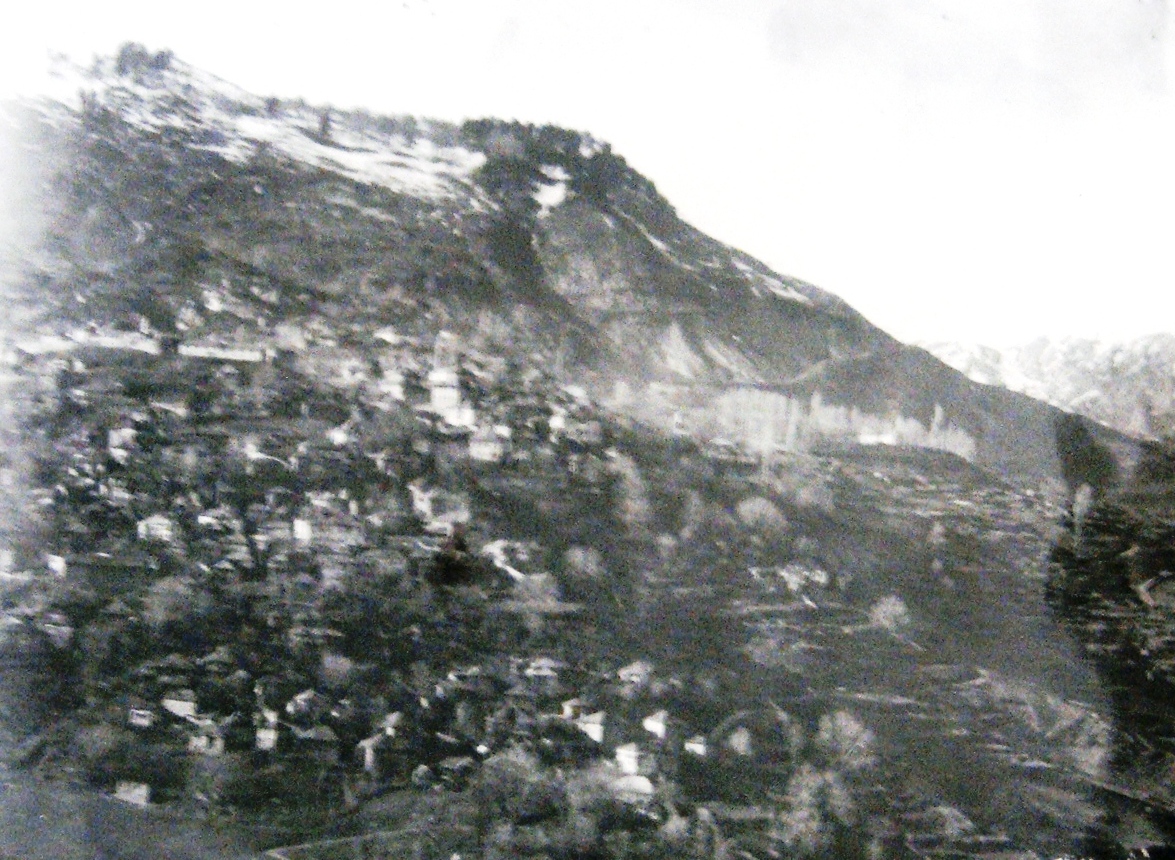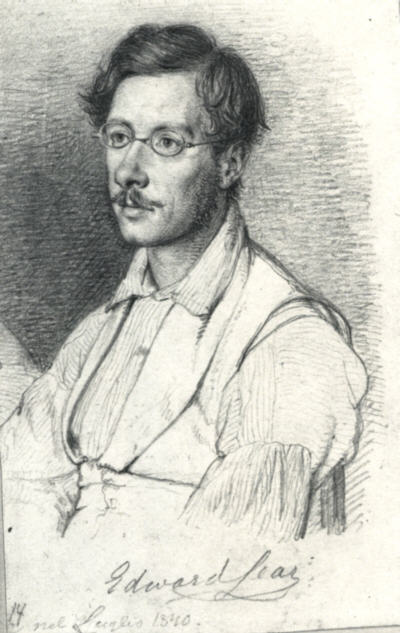|
Zygos Mountain Range
In many written accounts, from medieval times until now, a large section of the mountain range that crosses the east region of the Metsovo area is referred to as Zygos. This name derives from the name Zygos or ʤugu in the local Vlach dialect, which the people of Metsovo used to refer to a certain saddle (notch) of the same mountain ridge that served as a mountain pass. For centuries it was the highest point of the main travel route between Epirus and Thessaly. The timeless importance of this section of the ridge to land transportation in the past, the difficulties faced by travelers in the wintertime as well its pristine beauty made it the object of multiple and extensive references from antiquity until recent years. The wanderer Leake considers Zygos as the most noteworthy mountain in Greece and the location of the springs of its largest rivers. The painter Edward Lear Edward Lear (12 May 1812 – 29 January 1888) was an English artist, illustrator, musician, author and poet, ... [...More Info...] [...Related Items...] OR: [Wikipedia] [Google] [Baidu] |
Metsovo
Metsovo ( el, Μέτσοβο; rup, Aminciu) is a town in Epirus, in the mountains of Pindus in northern Greece, between Ioannina to the west and Meteora to the east. The largest centre of Aromanian (Vlach) life in Greece, Metsovo is a large regional hub for several small villages and settlements in the Pindus region, and it features many shops, schools, offices, services, museums, and galleries. The economy of Metsovo is dominated by agriculture and tourism, the latter of which flourishes in winter. Metsovo is served by Greek National Road 6 (Ioannina – Trikala) and by the Egnatia Odos motorway. Etymology From medieval times till well into the 19th century, Metsovo was known, in various sources, as ''Metzovo''. From the end of the 18th century on, the literary form of ''Messovon'' makes its appearance. The town is known as ''Aminciu'' in Aromanian (Vlach), and as ''Miçova'' in Ottoman Turkish. Ottoman census records In the Ottoman census records we see the word ''Mcwh'' ... [...More Info...] [...Related Items...] OR: [Wikipedia] [Google] [Baidu] |
Vlach
"Vlach" ( or ), also "Wallachian" (and many other variants), is a historical term and exonym used from the Middle Ages until the Modern Era to designate mainly Romanians but also Aromanians, Megleno-Romanians, Istro-Romanians and other Eastern Romance-speaking subgroups of Central and Eastern Europe. As a contemporary term, in the English language, the Vlachs are the Balkan Romance-speaking peoples who live south of the Danube in what are now southern Albania, Bulgaria, northern Greece, North Macedonia, and eastern Serbia as native ethnic groups, such as the Aromanians, Megleno-Romanians and the Timok Romanians. The term also became a synonym in the Balkans for the social category of shepherds, and was also used for non-Romance-speaking peoples, in recent times in the western Balkans derogatively. The term is also used to refer to the ethnographic group of Moravian Vlachs who speak a Slavic language but originate from Romanians. "Vlachs" were initially identified and descr ... [...More Info...] [...Related Items...] OR: [Wikipedia] [Google] [Baidu] |
Epirus
sq, Epiri rup, Epiru , native_name_lang = , settlement_type = Historical region , image_map = Epirus antiquus tabula.jpg , map_alt = , map_caption = Map of ancient Epirus by Heinrich Kiepert, 1902 , coordinates = , coor_pinpoint = , coordinates_footnotes = , subdivision_type = Present status , subdivision_name = Divided between Greece and Albania [Baidu] |
Thessaly
Thessaly ( el, Θεσσαλία, translit=Thessalía, ; ancient Thessalian: , ) is a traditional geographic and modern administrative region of Greece, comprising most of the ancient region of the same name. Before the Greek Dark Ages, Thessaly was known as Aeolia (, ), and appears thus in Homer's ''Odyssey''. Thessaly became part of the modern Greek state in 1881, after four and a half centuries of Ottoman rule. Since 1987 it has formed one of the country's 13 regions and is further (since the Kallikratis reform of 2011) sub-divided into five regional units and 25 municipalities. The capital of the region is Larissa. Thessaly lies in northern Greece and borders the regions of Macedonia on the north, Epirus on the west, Central Greece on the south, and the Aegean Sea on the east. The Thessaly region also includes the Sporades islands. Name and etymology Thessaly is named after the ''Thessaloi'', an ancient Greek tribe. The meaning of the name of this tribe is unknow ... [...More Info...] [...Related Items...] OR: [Wikipedia] [Google] [Baidu] |
William Martin Leake
William Martin Leake (14 January 17776 January 1860) was an English military man, topographer, diplomat, antiquarian, writer, and Fellow of the Royal Society. He served in the British military, spending much of his career in the Mediterranean seaports. He developed an interest in geography and culture of the regions visited, and authored a number of works, mainly about Greece. Life He was born in London to John Martin Leake and Mary Calvert Leake. After completing his education at the Royal Military Academy, Woolwich, he was commissioned a 2nd Lieutenant in the Royal Regiment of Artillery in 1794. Having spent four years in the West Indies as lieutenant of marine artillery, he was promoted to captain, and was sent in 1799 by the government to Constantinople to train the forces of the Ottoman Empire in the use of artillery. The British Empire had decided to support the Ottoman in its defence against Napoleonic France. A journey through Asia Minor in 1800 to join the British ... [...More Info...] [...Related Items...] OR: [Wikipedia] [Google] [Baidu] |
Edward Lear
Edward Lear (12 May 1812 – 29 January 1888) was an English artist, illustrator, musician, author and poet, who is known mostly for his literary nonsense in poetry and prose and especially his limerick (poetry), limericks, a form he popularised. His principal areas of work as an artist were threefold: as a draughtsman employed to make illustrations of birds and animals; making coloured drawings during his journeys, which he reworked later, sometimes as plates for his travel books; and as a (minor) illustrator of Alfred, Lord Tennyson's poems. As an author, he is known principally for his popular nonsense collections of poems, songs, short stories, botanical drawings, recipes and alphabets. He also composed and published twelve musical settings of Tennyson's poetry. Biography Early years Lear was born into a middle-class family at Holloway, London, Holloway, North London, the penultimate of 21 children (and youngest to survive) of Ann Clark Skerrett and Jeremiah Lear, a stoc ... [...More Info...] [...Related Items...] OR: [Wikipedia] [Google] [Baidu] |
Mountain Ranges Of Greece
A mountain is an elevated portion of the Earth's crust, generally with steep sides that show significant exposed bedrock. Although definitions vary, a mountain may differ from a plateau in having a limited summit area, and is usually higher than a hill, typically rising at least 300 metres (1,000 feet) above the surrounding land. A few mountains are isolated summits, but most occur in mountain ranges. Mountains are formed through tectonic forces, erosion, or volcanism, which act on time scales of up to tens of millions of years. Once mountain building ceases, mountains are slowly leveled through the action of weathering, through slumping and other forms of mass wasting, as well as through erosion by rivers and glaciers. High elevations on mountains produce colder climates than at sea level at similar latitude. These colder climates strongly affect the ecosystems of mountains: different elevations have different plants and animals. Because of the less hospitable terrain an ... [...More Info...] [...Related Items...] OR: [Wikipedia] [Google] [Baidu] |
Landforms Of Ioannina (regional Unit)
A landform is a natural or anthropogenic land feature on the solid surface of the Earth or other planetary body. Landforms together make up a given terrain, and their arrangement in the landscape is known as topography. Landforms include hills, mountains, canyons, and valleys, as well as shoreline features such as bays, peninsulas, and seas, including submerged features such as mid-ocean ridges, volcanoes, and the great ocean basins. Physical characteristics Landforms are categorized by characteristic physical attributes such as elevation, slope, orientation, stratification, rock exposure and soil type. Gross physical features or landforms include intuitive elements such as berms, mounds, hills, ridges, cliffs, valleys, rivers, peninsulas, volcanoes, and numerous other structural and size-scaled (e.g. ponds vs. lakes, hills vs. mountains) elements including various kinds of inland and oceanic waterbodies and sub-surface features. Mountains, hills, plateaux, and plains are the fo ... [...More Info...] [...Related Items...] OR: [Wikipedia] [Google] [Baidu] |






.jpg)